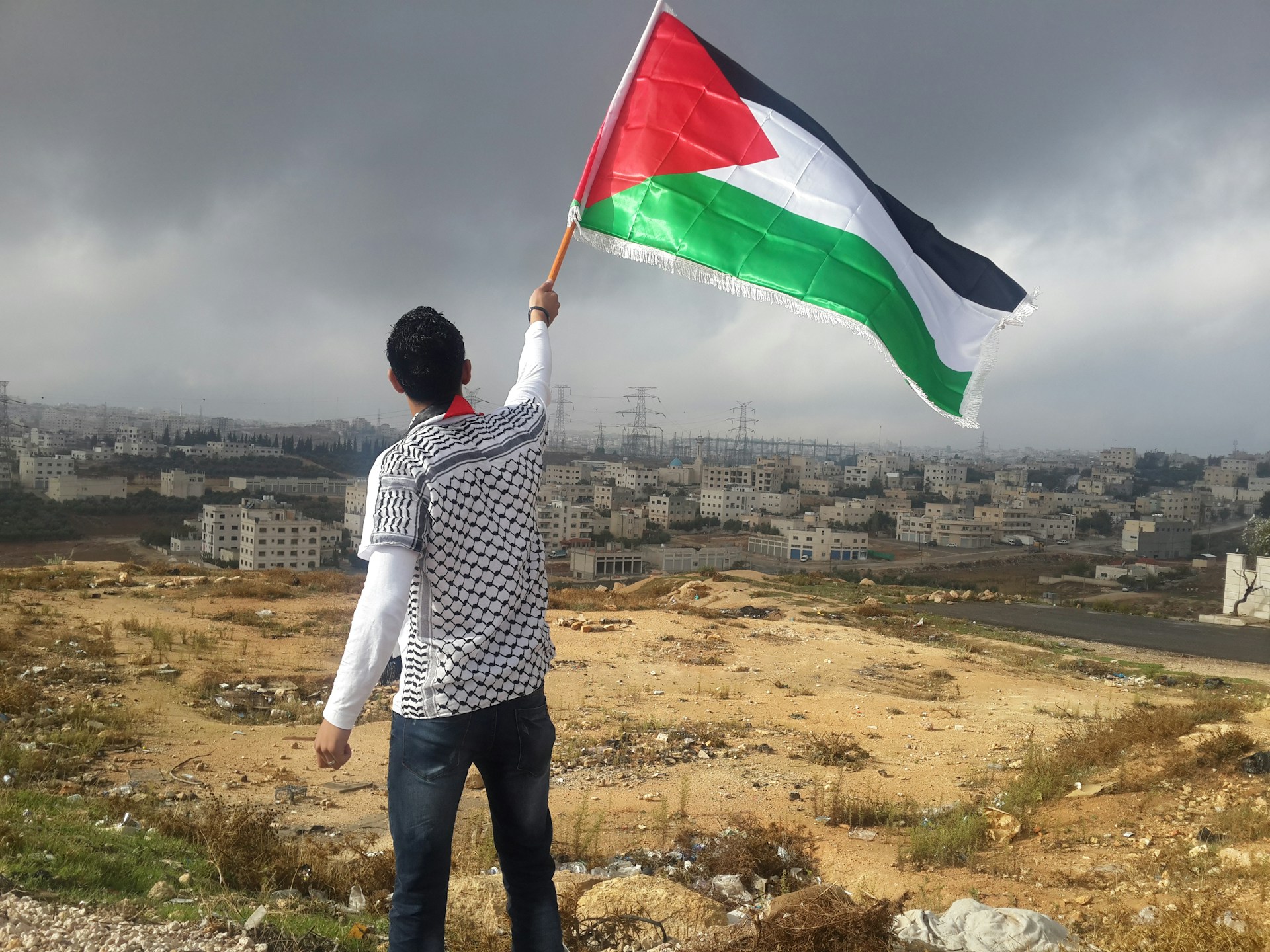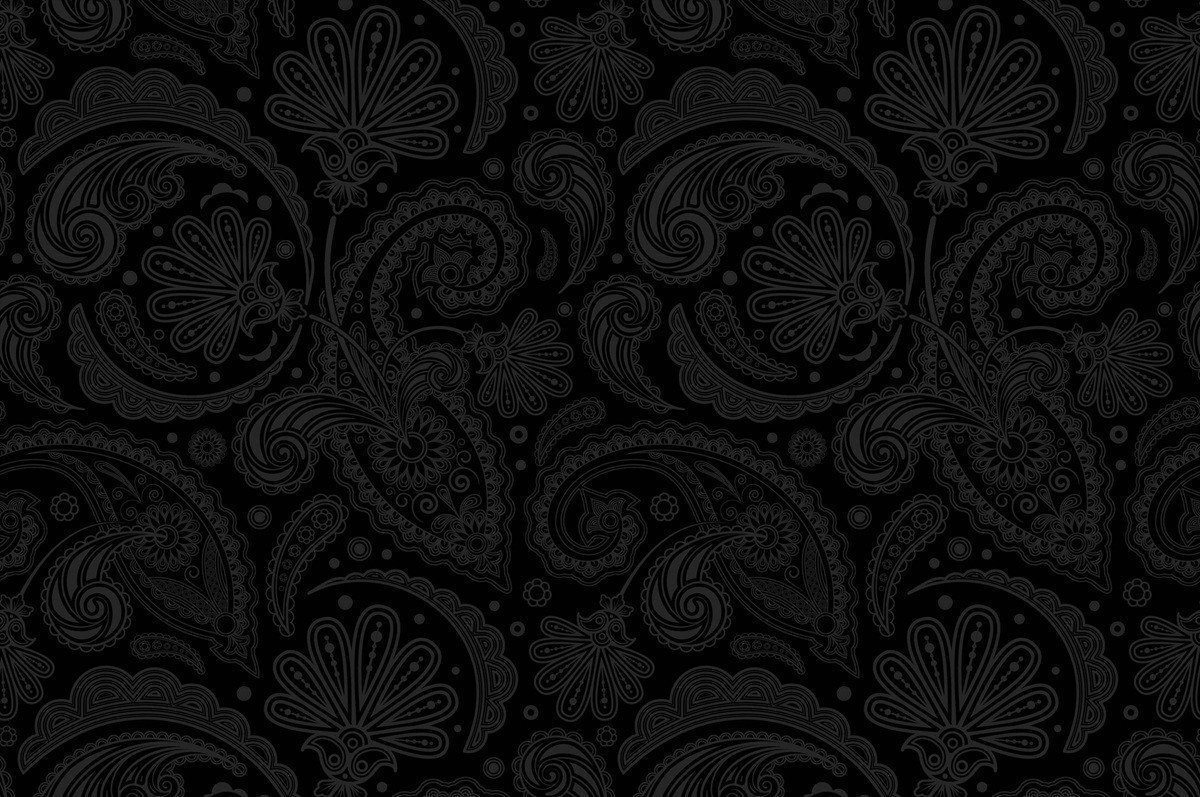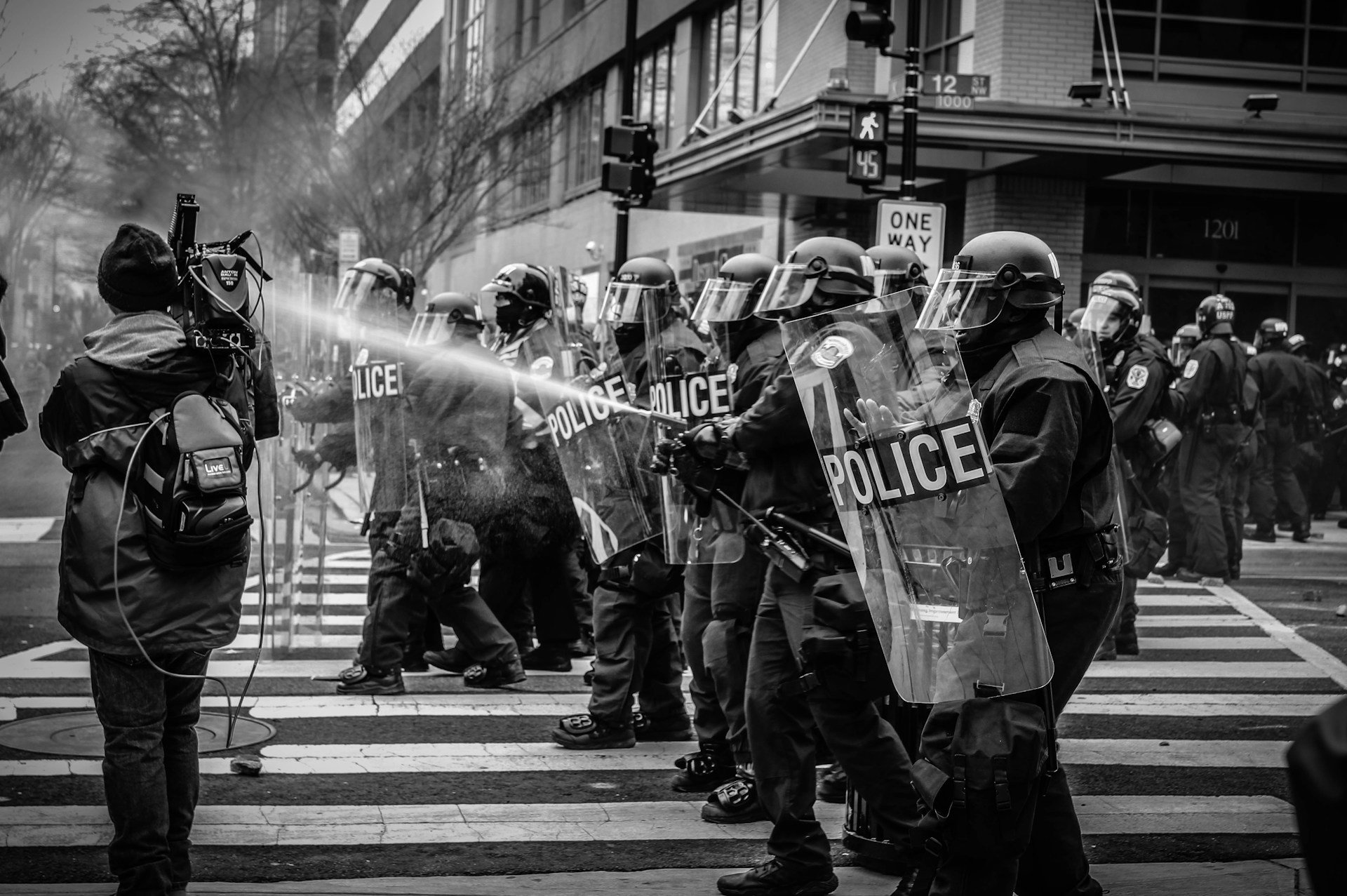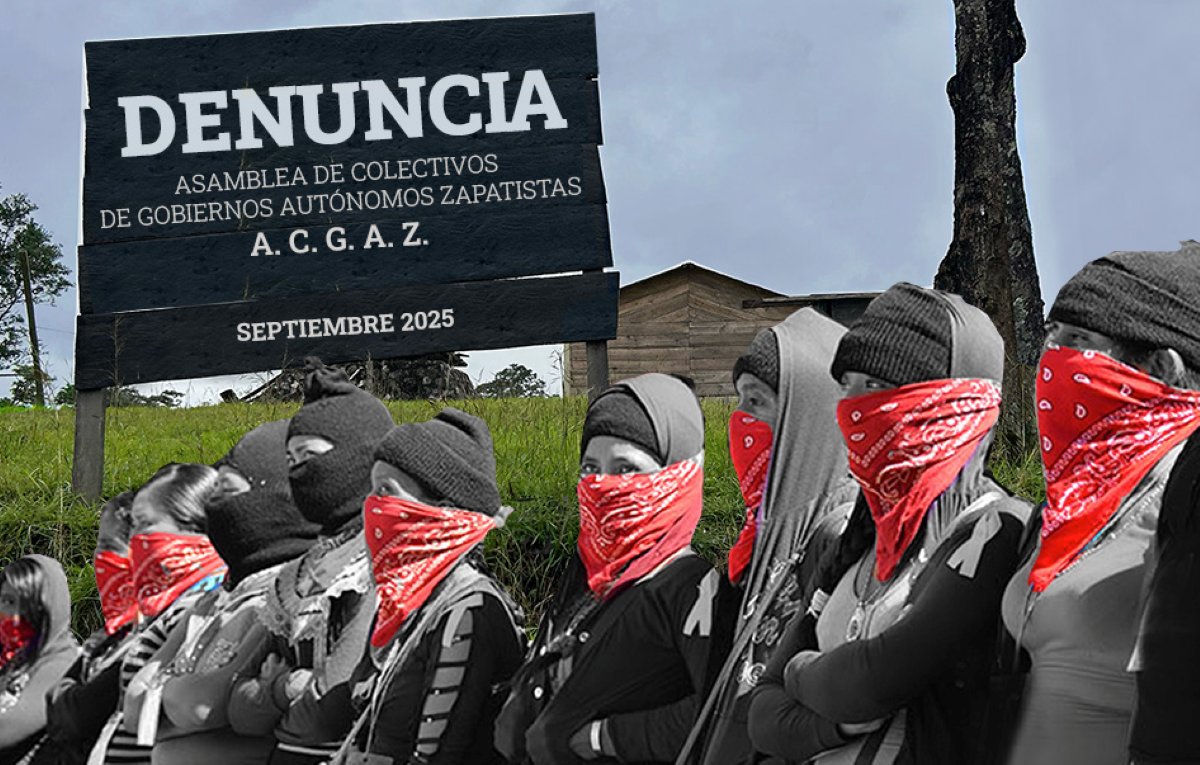Filed under: Featured, Health Care, Interviews, Solidarity, War

Interview with an anarchist humanitarian aid worker who reports on providing volunteer medical services in Gaza. Originally posted to Living and Fighting.
What follows is an interview with Louis, an anarchist humanitarian aid worker who, at the time of this interview, is waiting in Amman, Jordan to enter Gaza for a second deployment providing volunteer medical services in the midst of the ongoing genocide. He was previously in Gaza for a month this spring.
Living & Fighting: What is the situation at the border currently? How will you enter the country and what’s causing the delay?
Louis: The situation at the border changed a lot about a month ago, in early May, which is when the Israeli army entered Rafah in a real way for the first time and took control of the Rafah border crossing. It was previously a border controlled by Egyptian and Gazan authorities. Initially, Egypt was blocking all movement of aid and people from Cairo to the Kerem Shalom crossing, which is a border between Israeli-controlled territory and Gaza, also in the southeastern corner of the Strip. Egypt was blocking the border to try to put pressure on Israel to reopen the Rafah crossing because the loss of that crossing for Egypt represents a loss of control, power, and money from making Palestinians pay a ridiculous amount of money to evacuate their families through Egypt.
Currently, me and my team and every other NGO worker relocated to Amman, Jordan about a week after Israel closed the Rafah border crossing. Now the route to cross goes from Amman through the West Bank and Israeli-controlled territory to Kerem Shalom this way. We have been slowly getting our team in bit by bit, but it’s been about a month. Previously we would have a crossing date from Cairo. We would send the entire team in and a bunch of boxes of medical supplies as well as the food that we subsist on. Right now, we can bring in pretty much nothing and convoys have gone from roughly 150 international aid workers two times a week to twenty-five twice a week. So from something like three hundred to less than fifty per week.
So yeah, we’ve been waiting about a month to get our entire team in and our entire team in there out, and it’s one of the things that is totally hamstringing the humanitarian response in Gaza right now. In addition to severe fuel and supply shortages and increased fighting.
L&F: Tell us about your first deployment earlier this year.
Louis: Earlier this year, I spent a month in Gaza working with the same organization I’m working with now. We were staffing what’s called a Trauma Stabilization Point in conjunction with the Palestinian Red Crescent Society. A Trauma Stabilization Point or a TSP is sort of a temporary healthcare facility set up in tents. And the idea of a TSP is when there’s active fighting, which there was at the time, to set up as close to the “red zone,” which is the free fire area, as possible. So staying outside of it but very close to it, and acting as a bridge and stabilization point between the areas of active conflict where healthcare workers and the Palestinian ambulances can’t reach because it’s too dangerous, and hospitals with more definitive care that are further away. So we were on the edge of the “red zone” and did some degree of general healthcare, but there was less of that. Our primary function was when there was fighting or bombings or strikes from the military and casualties in small numbers or mass casualty incidents, people would bring the injured people to us by any way they could. So sometimes that was on donkey carts and the backs of pickup trucks, private cars, on the backs of motorbikes. We would provide immediate trauma stabilization care in the tents, and if the people who came to us survived and could be stabilized, they would then go into Red Crescent ambulances for travel to hospitals further south and east of where we were.
It was by far the most intense experience of my life to be dealing with mass casualty incidents on the edge and sometimes in the active conflict zone. It was also such an incredible honor to be working side-by-side every day in a collaborative effort with Palestinian health care workers who have been showing up to work, trying to do the best they can for, at that point, I don’t know, six or seven months every day. Sometimes being paid a little, sometimes not being paid. All of our co-workers were internally displaced themselves, living in tents with their families, whether because they had to evacuate where they lived because it was unsafe, or their houses had been destroyed. Pretty much everyone had lost family members and friends.
Our co-workers continued to lose friends and family very close by while we were there. It was such an honor to work alongside people who have suffered completely unimaginable tragedy and personal and communal apocalypse and are still showing up every day and doing incredible work.
I’m gonna have a lot to think about and process from the month I spent there that I haven’t done yet because I had a fairly quick turnaround time before getting it together to come back, but it’s gonna stick with me for the rest of my life in ways that are both good and inspiring and a little bit rougher.
L&F: What made you want to go to Gaza in the midst of a war?
Louis: I don’t really know how to coherently answer the question of why I went to Gaza in the midst of a war, because I was trying to since about a month after the war broke out. I’ve been involved in pro-Palestine activism for a long time and this is something that is close to my heart. I also have a pretty long history of doing humanitarian aid work in different places. I’ve been an ER nurse for a while now. So, I don’t know, it seemed like the only thing that made sense for me to do. I think many of us who cared when the war broke out, felt really powerless and like there was nothing we could do to prevent the genocide that was happening. But I knew that I did have skills and experience that could help try to mitigate that, and it was really important to me that if I was able to, the only thing that made sense to do was show active and practical solidarity to the Palestinian people by working there.
This isn’t to try to minimize the risks or the scariness of going into a war zone in that way. I was scared before I went when I was trying to decide whether or not to go. I was scared when I decided to go, before I went. And I didn’t really stop being scared until I was there and there was a job to do. And then I was still scared sometimes when I was there. It’s a really scary thing to do, but it also is what made sense to me.
L&F: You’ve been traveling to crisis zones for years. Tell us about other places you’ve provided humanitarian aid and how they compare to what you’ve seen in Gaza.
Louis: This was the first time I have ever worked in an active conflict zone. I’ve worked over the years in some fairly intense disaster zones both in the States and in places like Haiti after the 2010 earthquake. This was different because in other times generally, not including work on the US/Mexico border, I’m responding to a disaster after the acute phase has happened. Like the hurricane or the earthquake or something like that. And we’re trying to mitigate the harm that’s been caused by that and the disruption and the lack of resources resulting from that. One of the ways that Gaza is really different is that the disaster and the apocalypse is ongoing. It’s not an event that happened and stopped and now we’re in the clean-up or rebuild or mitigate-the-harm phase.
My partner has been doing this work intensively for a long time now and talks about how in the US we talk about prepping for “the apocalypse” like it is one singular big event but in fact, all around the world millions of people face their own apocalypse every day. And this really resonated with me in Gaza. Every day in that place there is a new apocalypse on the scale of one family, one block, one neighborhood or an entire city or camp. Maybe this was a place that had been relatively ok but affected a family that’s moved four times already or that’s already lost family members and just lost more. Or it’s people truly meeting their apocalypse for the first time. And it never stops. It’s ongoing every day and every day there is a new apocalypse in a place that hadn’t had one or a new small apocalypse for a family that’s moved four times already or that’s already lost family members and just lost more. And that made it really unique to be in a place where the disaster keeps going.
It’s also really different from other places because the situation is dangerous in a way that doesn’t allow you access to go where you want to go and to do what you want to do. Which is common for a lot of humanitarian aid scenarios, but not one that I was familiar with because I have not worked in conflict zones before. So it’s really hard to know that things are happening, in some cases very close by. For example, seeing and feeling the bombs and missile strikes happening really close to where we’re working and knowing that actually we can’t respond to that place. We have equipment, and we have skills and we have experience and knowledge for the people that just got hit, like a kilometer, half a kilometer away, and we absolutely can’t go there. So it adds a new level of emotional difficulty than I was used to. Whereas in other disaster zones a lot of our barriers were information, like knowing where we were needed or access issues that could be solved if we could puzzle it out or work around it or figure out a way to get somewhere. And the fact that here that was not the case was really difficult.
One of the other differences with Gaza is that for me the scale is like nothing I’ve ever experienced. The number of people that are affected, the number of people that are wounded and killed every day, the number of people who are going hungry is kind of mind-boggling, especially taking place in such a small area. It’s also really crazy because generally in disaster zones people are able to move in some way, whether that’s getting out of a hurricane zone to a shelter either before the storm or after into temporary housing or relocating into…like in Haiti people couldn’t leave the city but they could leave their dangerous houses after the earthquake and live in the streets. I haven’t worked in other war zones, but generally people are able to move and to become internally or externally displaced people, but evacuate the areas where there’s fighting. In Gaza that is not possible. People can move ten miles, maybe, or maybe they can move to what has been called a “safer place,” but it isn’t really.
Before Egypt closed the border, one hundred fifty people a day could leave Gaza if they paid something like $10,000 per person, and that was it other than a tiny number of medical evacuations. And now that the border is closed nobody can leave.” So it’s really unique in terms of just the complete lack of an ability for anybody to leave, and everyone is just trapped in a tiny area with a war going on.
L&F: You regularly provide humanitarian aid to migrants as they cross the U.S./Mexico border. Do you see any connections between the situation in Gaza and the situation in the borderlands here?
Louis: Yeah, I’ve been doing direct aid work on the U.S./Mexico border for quite some time now, and there are a lot of pretty striking similarities, or maybe I should say connections, between the border there and Gaza. There’s some pretty obvious ones, like the fact that it’s many of the same security contract firms that profit both off of the occupation and subjugation of Palestine and the border industrial complex. There’s also a lot of connections in terms of the arms and equipment used. Israel’s defense industry has for a long time used the West Bank in Gaza as sort of a testing, proving, experimentation ground for new military and weapons systems, which includes things like drones and crowd control munitions, and also other things like the A.I. targeting that has been in extensive use in Gaza. And we see a lot of the technologies that show up on the border that are used as part of this surveillance system and low-level warfare against people crossing were developed by Israeli firms and tested on Palestinians before they came to be used in the U.S. along the border.
I spent a lot of my time this winter working along the border wall as there was an active crisis there. When I entered Gaza in Rafah, the first thing I did was drive along another really big border wall. We’re talking about systems of control that include physical barriers and also really intense surveillance systems that are designed to keep people out or in, but they’re always there and they’re always blocking people. And as people who do not believe in borders, it’s our responsibility to fight for the free movement of people, whether that means people being allowed out of Gaza or the West Bank, or being allowed across the border wall.
Another thing I think a lot about with regard to borders and Gaza is that so many of the people showing up on the border wall or clandestinely crossing through the desert on the U.S./Mexico border are fleeing terrible things like what’s happening in Gaza. Maybe on different scales, maybe on similar scales, but the one really fundamental difference is that one way or another these people were able to leave and to flee that and to go, and currently nobody in Gaza can get out of Gaza. Before the border was closed, it was an extremely small number of people who either had extreme privilege before the war or who had friends and family on the outside who were able to help them fund the obscene fee it took to get out. Gaza is what happens when the war comes and the apocalypse comes and nobody can go anywhere.
I think that if Egypt had opened its border with Gaza at the start of the war, Gaza would be extremely depopulated right now. And the fact that it isn’t really speaks to the inhumanity of bombing the shit out of an open-air prison.
L&F: What are your reflections on the social movement in solidarity with Palestine going on in the U.S. right now? How does it look from where you’re standing?
Louis: I mentioned how powerless I felt at the beginning and throughout the war to do anything to stop or mitigate it, but I think that it’s really important to realize that actually the public pressure has made a difference both in the States and around the world. I’ve been doing pro-Palestine activism for a long time now, and there has never been a social movement of anywhere close to the size we saw this year that was pro-Palestine, anti-occupation or anything vaguely resembling that.
While it has not stopped the war, it has made a real and concrete impact on U.S. policy, which has made a smaller but tangible impact on Israeli policy. I genuinely think that if it had not been for the social movement in the States and in other places, the Israelis would have carpet bombed Rafah like they did to Gaza City at the start of the war and been far more unrestrained. So maybe it is a small thing, maybe it’s minimal, tiny mitigation of a genocide, but it really has made a difference.
In anarchist circles, like in a lot of other circles, we have paid a lot of attention to the genocide in Gaza, partly because Palestinian liberation is important to us as an anti-colonial, anti-imperialist, anti-racist struggle. And there’s a long history of anarchists in the States and in Europe and in Israeli-controlled Palestine who have acted in solidarity with the Palestinian people. And this makes sense for our focus on it, but it is far from the only genocide that’s taking place right now, it’s far from the only brutal war that’s taking place right now. And a lot of the other terrible things that happen in the world outside of the States and Europe tend to get way less attention.
One thing that I miss from the anarchist movements of my youth, which were closer in time to the anti-globalization movement, was a focus on international solidarity and international movement work that goes beyond connections between the U.S. and Western Europe. And I would really love to see some of that come back. Anarchists and other radicals traveling to Rojava to be in solidarity with the revolution there is a really inspiring example of what’s possible. Gaza is not the only place that is being destroyed for American and imperial interests.
The social movement since October is a really great example of how those of us with the privilege to live in the heart of empire and benefit and profit from that every day are uniquely positioned to fight that empire’s interests both through work here and through work in other places. I just want to encourage that outward-looking perspective, that our responsibility as anarchists or whatever we call ourselves is not just to what’s happening in the States but it’s what’s happening in the entire American empire, which I guess you could call the entire world. And that we also have responsibility there.
Photo by Ahmed Abu Hameeda on Unsplash





